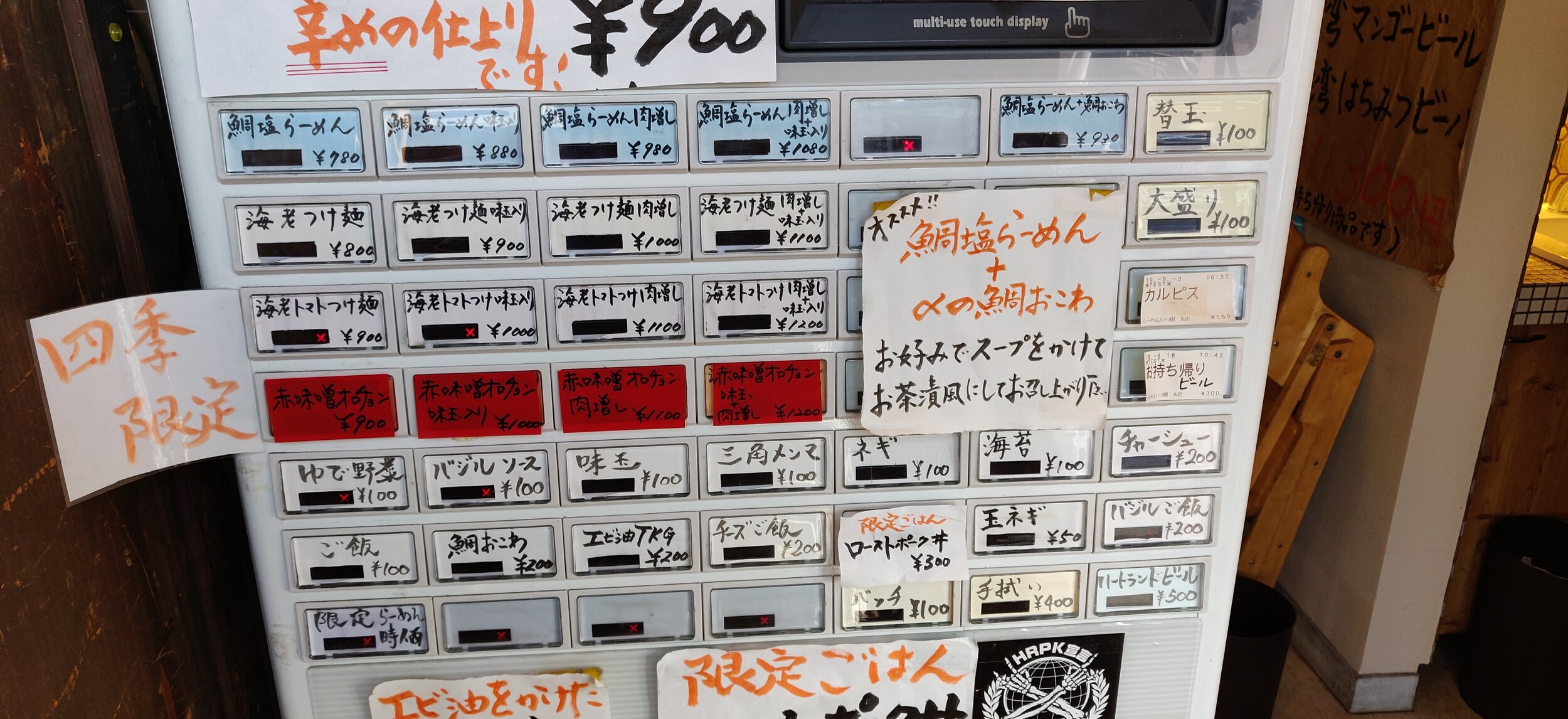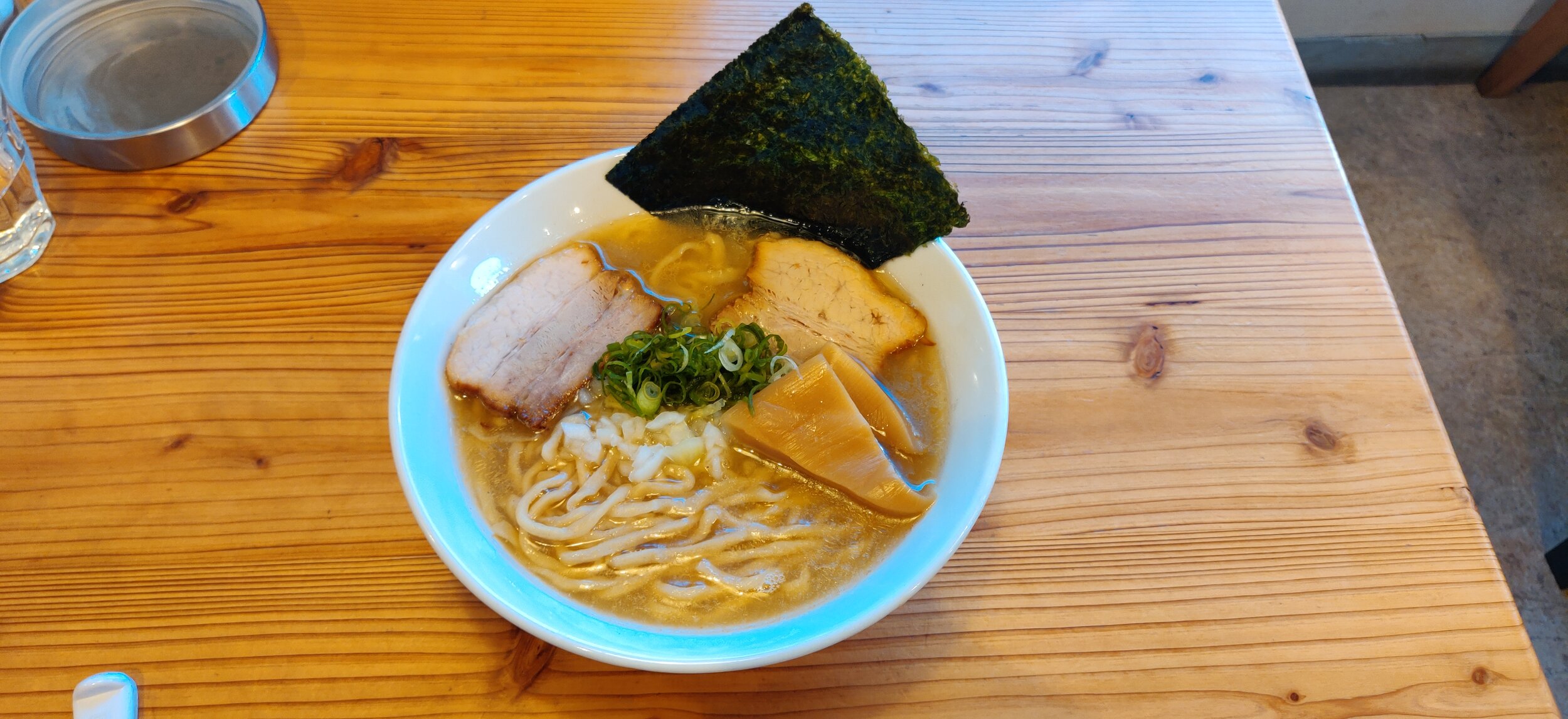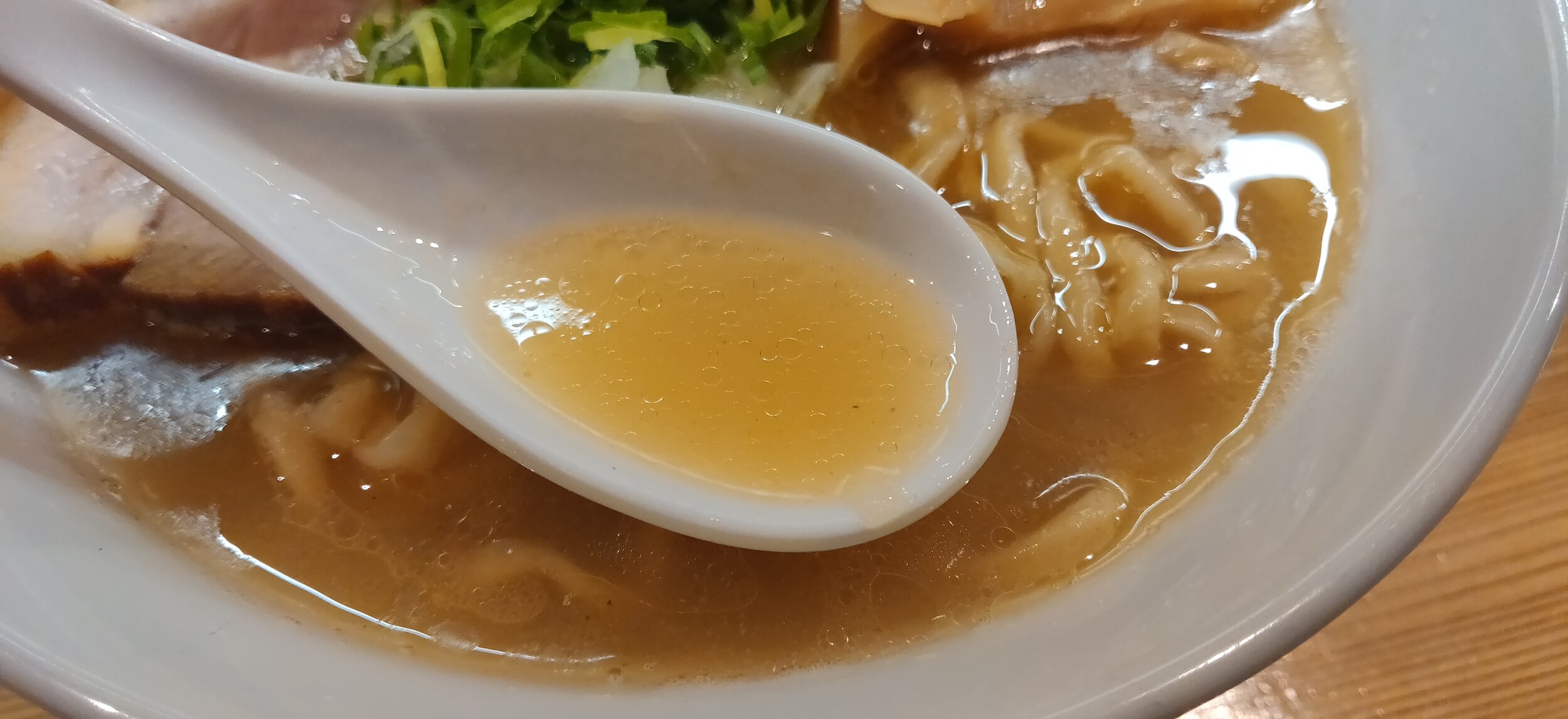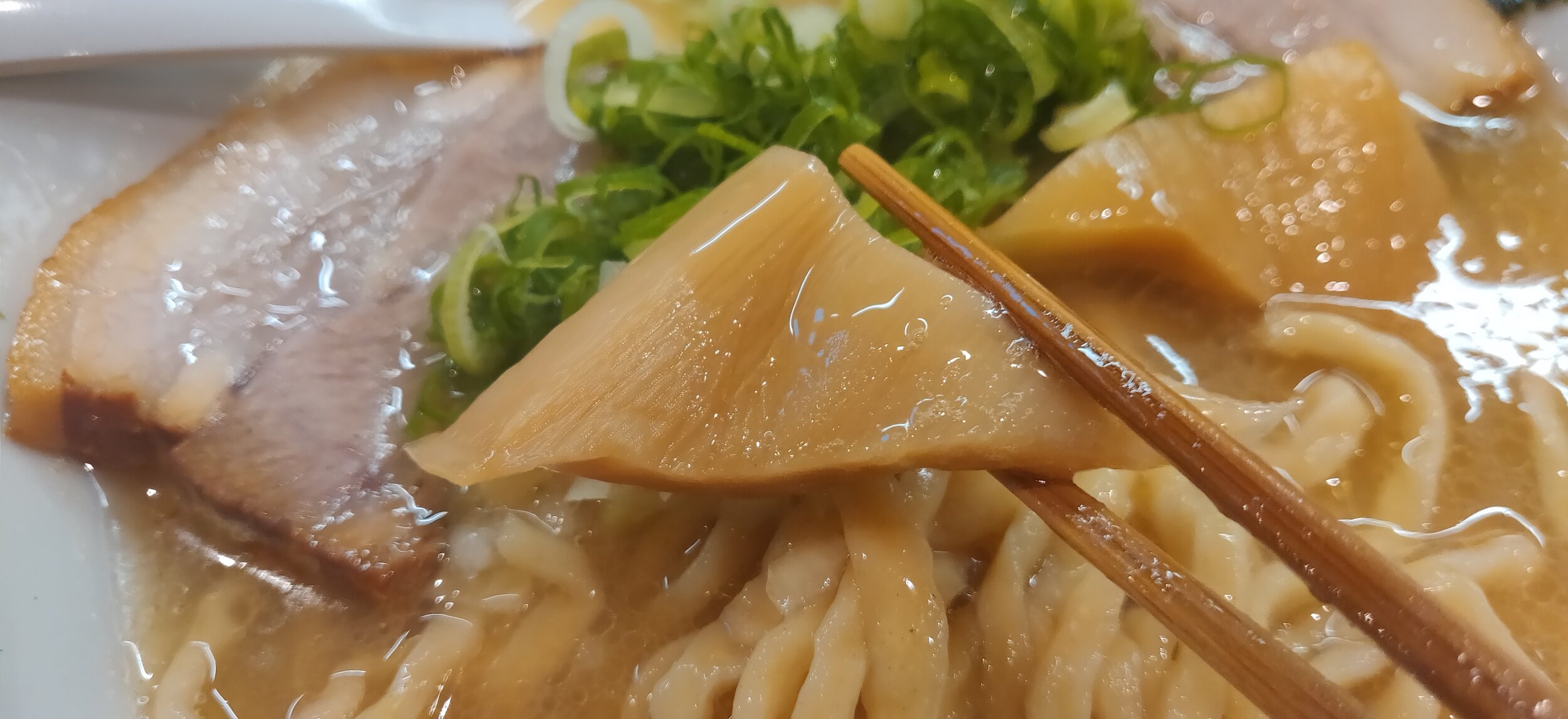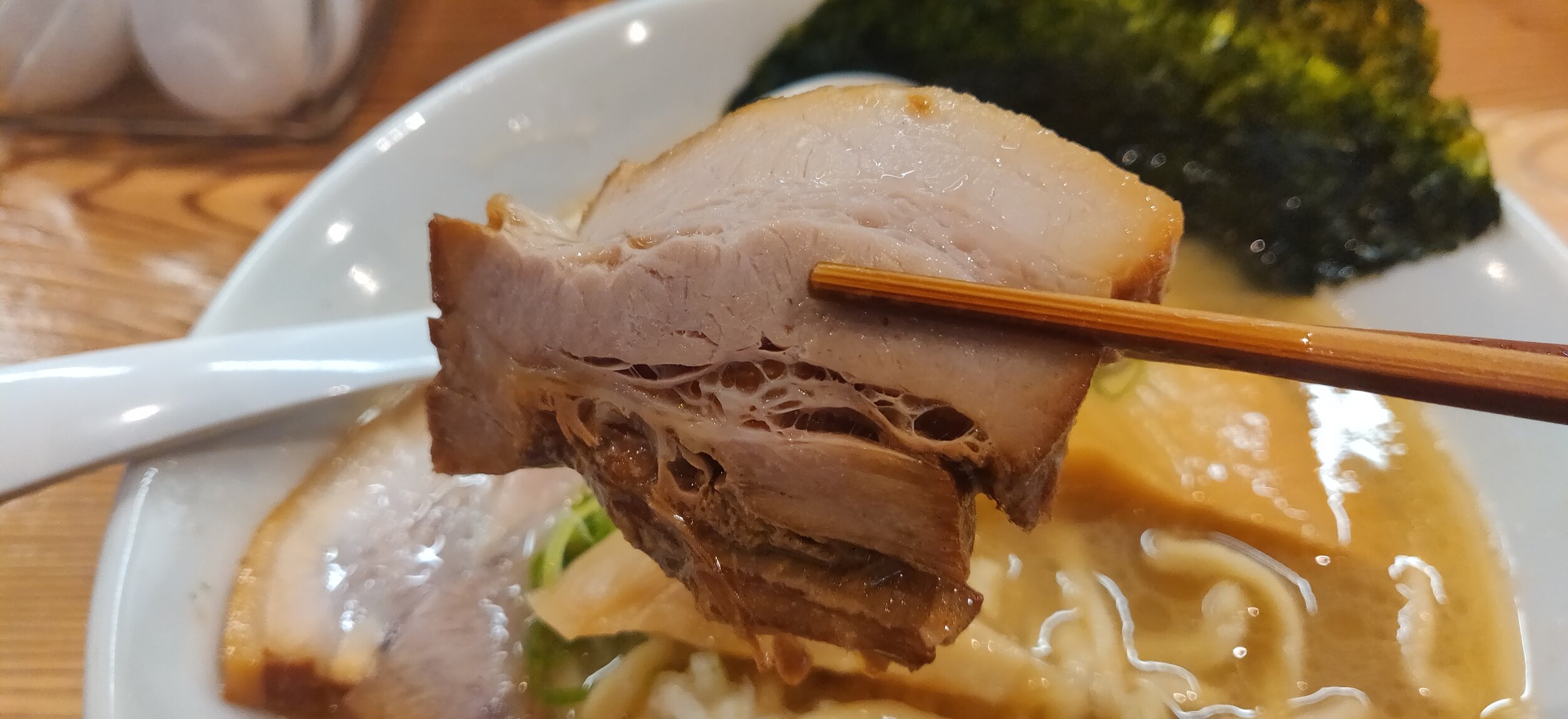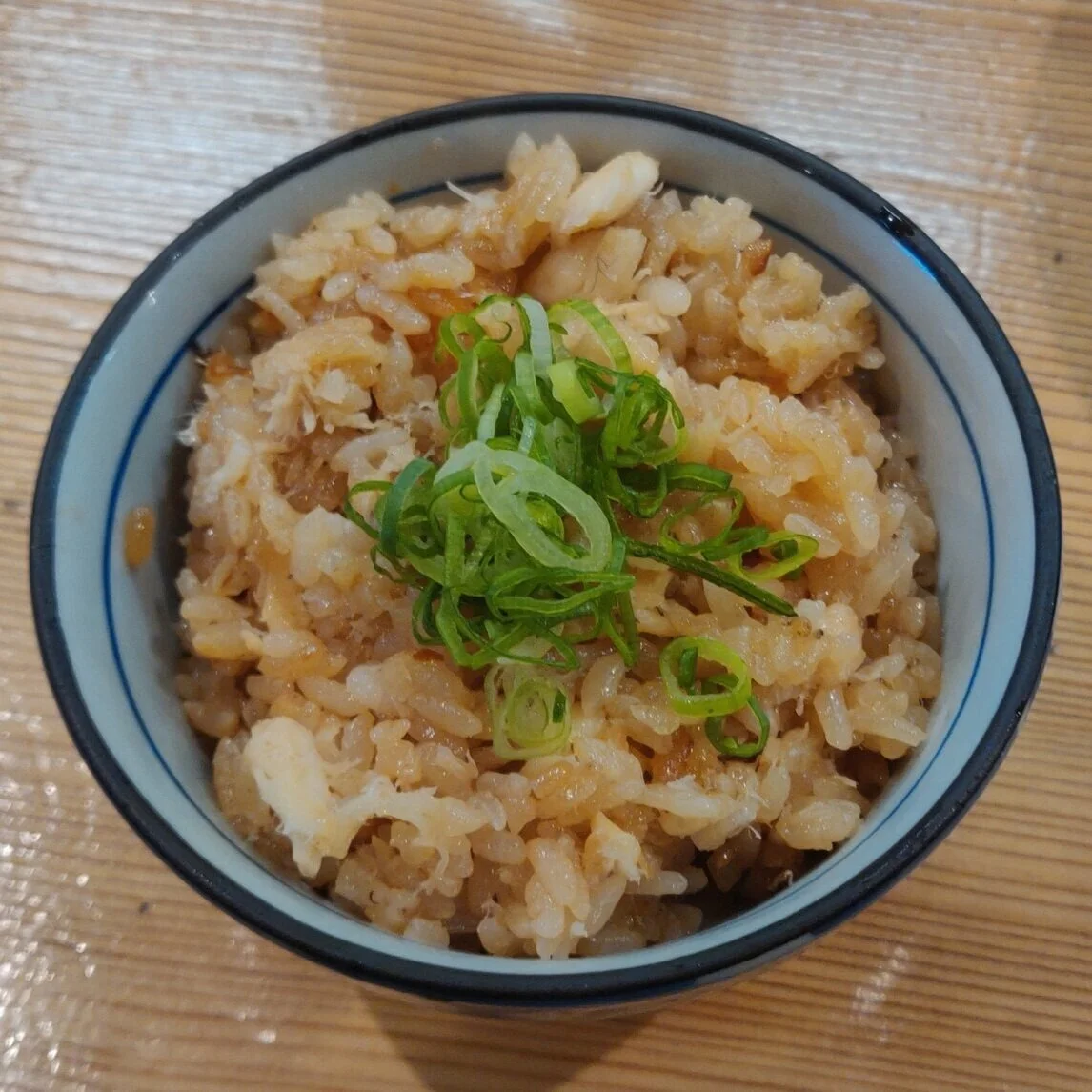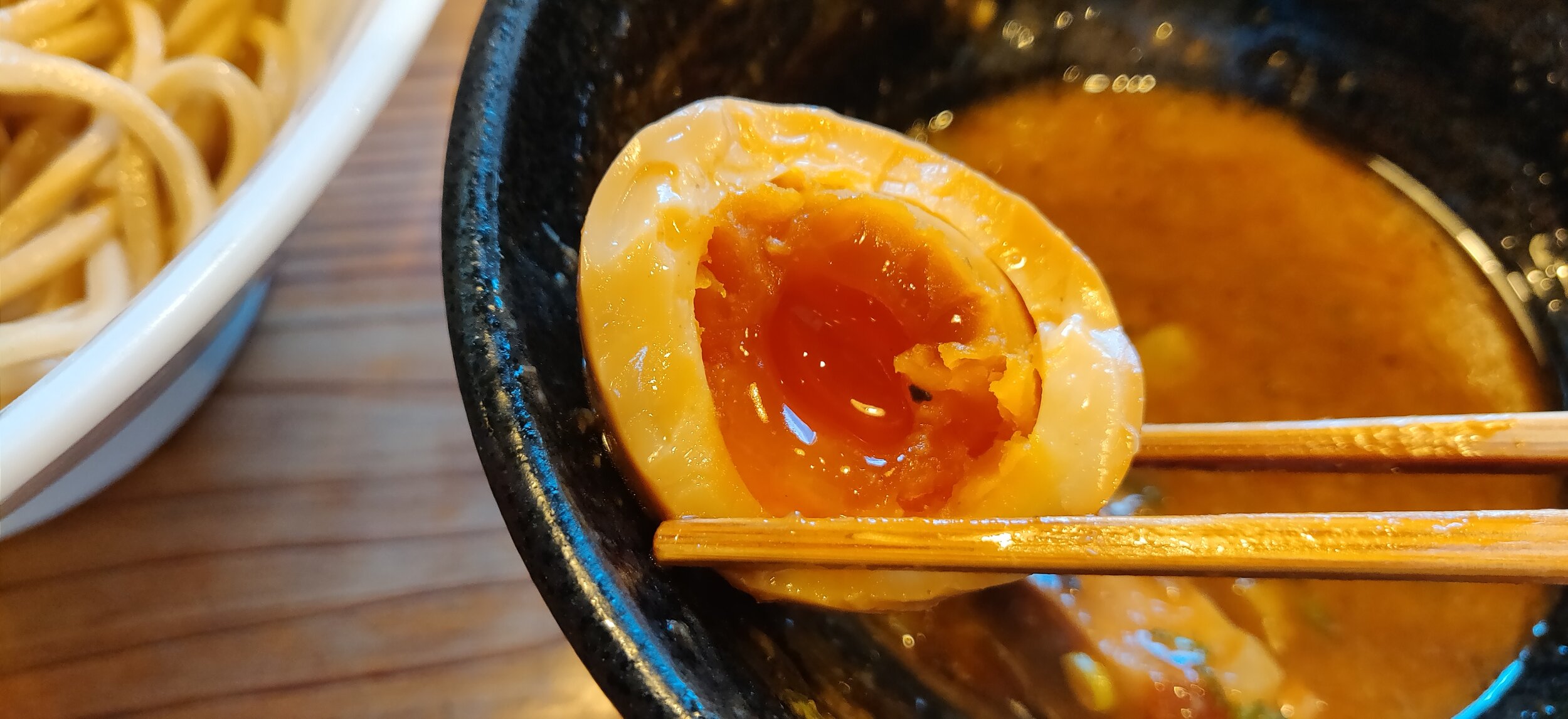Ramen Itsuki Honten (らーめんいつ樹 本店), OG Shrimp Ramen; Ome, Tokyo
One of the interesting things about ramen enterprises nowadays is each restaurant’s stance on expansion. The more well known restaurants such as Ichiran and Ippudo will go ahead and franchise their shop, opening locations which serve their iconic bowls in as many areas as possible while opening up factories in which they make their soup and noodles to send to these various shops. Other more high end stores tend to open different ramen brands which serve entirely different bowls from the original locations while still maintaining the essence of the shop. Examples of these shops would include those in the Mensho group or the Hayashida branches. However, some more niche places will do a mix of the two, where they’ll serve their most memorable bowls of the original location, but also different spin on those iconic dishes at new shops. One such restaurant that followed this expansion route is Ramen Itsuki, located in far West Tokyo near Ome, with locations in Shinjuku and Akihabara. Well known for their use of shrimp in their tsukemen, Itsuki has since grown to a ramen empire. However not a lot of people have visited the original shop due to its location far from central Tokyo, but if you’ve dined at the famous shrimp tsukemen shop, Gonokami Seisakujyo, you’ll definitely want to try a bowl at the original location as it is a tier above the Shinjuku shop. Hours are Monday through Saturday from 11:00 until they run out of soup, with dinner hours of 17:00 to 21:00. Itsuki is closed on Sundays so make sure you’re not planning a trip on that day.
So given it’s location, Itsuki rarely gets foreign visitors. As you can see from the above picture, they didn’t bother to translate their menu in to English, so I’ll go ahead and do that for you here. So starting with the top left, you have their famous Tai Shio Ramen made with Snapper in light blue. From there, going from left to right, you have it as is, with soft boiled egg, with extra char siu, extra meat and soft boiled egg, and on the far right you have their regular ramen with a side of snapper and rice, and extra noodles. On the second row is the Ebi Tsukemen, or Shrimp Tsukemen. From left to right you have it as is, with a soft boiled egg, with extra char siu, both egg and char siu, and at the very end is the extra noodle portions. Third row is their Ebi Tomato Tsukemen, or Shrimp with Tomato Tsukemen. Again, starting from the left is as is, with soft boiled egg, with extra pork char siu, both egg and extra char siu, and for whatever reason, the button at the far right is for Calpis drink. The fourth row is a ramen called Aka Miso Orochon which I’m guessing is an homage to the famous Orochon ramen in Japan. I’m assuming based on the color that this is quite spicy, but as I have never ordered this item, I can’t say for sure. And again, from left to right, the options are as is, with soft boiled egg, with extra pork char siu, both egg and extra char siu, and on the far right is for beer to take home. Fifth row is the toppings with steamed veggies, basil sauce, soft boiled egg, menma bamboo shoots, scallions, seaweed, and extra pork char siu. Sixth row are the rice bowl options of regular rice, snapper and rice, raw egg over rice with shrimp oil, cheese rice, roast pork over rice, diced raw onions, and finally a basil rice. Last row is a weird assortment of buttons from specialty ramen on the left, to pin button and hand wipes in the middle, and Heartland beer at the very end. I’ve had the pleasure of dining here multiple times, so I’ve had both the Snapper Shio Ramen as well as the Shrimp Tsukemen so I will review those menu items here. The Shrimp and Tomato Tsukemen is also offered in their Shinjuku branch, and I have tried it there so if you’re looking for a review on that item, check out my Gonokami Seisakujyo review coming later this week.
I’ll start my review as it follows the ticket machine with this order of the Tai Shio Ramen, broth made with snapper. First off, the soup here is phenomenal, packed with incredible umami flavor of the snapper, but also super unique as it is a lot oilier and thicker than what I typically see with shio ramen. I opted for the combo set which came accompanied with the rice an snapper, but the ramen itself did not come with a soft boiled egg. For those egg lovers out there, if you end up getting the rice set, be sure to order a side item of the soft boiled egg if it’s a must have for your bowl. I’m not particularly the biggest fan of the egg so I was fine without, but I know how some people get without it. Anyways, my regular bowl of ramen came adorned with a couple triangles of the menma bamboo shoots, two different cuts of char siu, chopped scallions, diced raw onions, and a slice of dried seaweed. Combined with the rice bowl, I thought this was a ton of food, but as you can see from the ticket machine, they have an assortment of things you can order from so choose away to customize your meal.
Anyways as my bowl arrived, I have to say, the opacity of the soup really threw me off. Most seafood based Shio ramen is quite light and airy, but this one was incredibly rich and dense. No complaints though, love being able to try different types and styles of ramen, and I was excited to dig in. Soup is incredibly oily and it coats your mouth from the first sip. The oiliness is then mellowed out by the umami filled flavors of the soup that gets a nice kick from the shio seasoning tare as salt might do when added to a grilled fish. The snapper has an unusually sweet undertone to it, but Itsuki does a fine job of taking that sweetness and enhancing it with their signature shio tare. From what I can tell, the oil stems from the snapper as well and it gives the soup its’ signature thick savory boost to an otherwise light, tanrei broth. I’m hesitant to flat out call it a tanrei because the flavors are reminiscent of a paitan in which it is cooked on high temp to melt down all the collagen and fats, but I think it sides just to the lighter end that it leans towards a tanrei. Noodles are a bit thick and soak up the soup as well as balance the rich flavors nicely. The all too usual flavors of the kansui really helps the noodles hold its own against the soup. Had a tad bit of flour flavors coming through due to its thickness, but I quite enjoyed it as it added another layer of complexity to the dish.
The texture variety here is one for the books as the mix of crunchy, chewy, snappy, and crispy really kept me on my toes. Menma bamboo shoots were the culprits for the crunchiness as it had a great bite to it different from the sometimes stringy texture it might usually have. Flavor wise the bamboo shoots was quite tame, but strong in comparison to other ramen shops as it has to hold its own against the rich flavors of the soup. Onions added some crispiness and I could hear it breaking apart with every bite while giving the bowl the spiciness it has in this freshly diced state. The snappy noodles complimented the pork char siu which gave a nice chewiness to the bowl completing the texture circle.
So the rice with snapper is actually a traditional Takikomi Gohan in which the rice is cooked along with a variety of ingredients and seasonings rather than it being cooked as is and flavorings added later. As the name would suggest, this was cooked along with the flesh of the snapper and is quite a fantastic rice bowl that is reasonably priced for what it is. Typically a bowl of snapper takikomi gohan would run you 600 to 800 yen, but I’m assuming Itsuki took the meat of the snapper they use for the broth so it was a way to use what probably would have been thrown away in to a cheap side dish. Make no mistake though, flavors are still definitely on point and paired with my ramen perfectly. At the start of the meal, the chef asks when you’d like the rice bowl and recommends you get it towards the end so you can use the soup leftover from your ramen to make a sort of rice porridge. Not one to dismiss the recommendations of a shop owner, I did exactly that and when my rice arrived I was advised to try a bit as is, then add soup as necessary. On its own, the rice is plenty flavorful and has a bit of soy sauce that ups the savoriness of the rice. However, with the addition of the soup, the rice bowl becomes phenomenal and really blends the meat of the snapper with the essence of it in the soup perfectly. It’s an obvious pairing, but still a bit of a shock to the taste bud with how delicious the two are together. The meat itself is fall apart tender while still maintaining its shape when submerged in to the soup. Green onions were a perfect touch to help balance out the richness and add some freshness to cut through the oils.
Next up is their tsukemen, which is what is served in their Shinjuku location, Gonokami Seisakujyo, as well. I mentioned this earlier, but this was the iconic bowl which had customers making three hour treks to try. The sheer popularity of the dish prompted the owners of Itsuki to open their Shinjuku location and has since become a perennial top 100 shop in Tokyo. As you can see from the picture above, the soup is really condensed and thick, easily coating the noodles giving each bite tons of flavor. The color comes from their use of shrimp which gives off these notes during the simmering process. Shrimp is an interesting broth base and not too many restaurants in Tokyo have tried this style, but Itsuki and Gonokami Seisakujyo has definitely perfected it. Difficulties lay in eliminating the bitter and pungent smell of the shrimp while still extracting the sweetness and savoriness of the shell. When you take your first bite, you immediately get a shock of shrimp which is akin to a lobster bisque with the same roasted and sweet flavors, but then will mellow out with the addition of pork to give it density and depth. Soup itself is quite creamy and similar to one you might get with a pork and seafood based soup. Noodles are thick, which is pretty typical for this style of tsukemen and it holds its own against the denseness of the shrimp broth. Due to its size, the noodles are quite strong in wheat aromas bringing a bit of nuttiness to the dish. The consistency of the soup is almost sauce like and every dip of the noodles gives it a nice thick coating. By the time I was finished with the noodles, I barely had any soup left for my soup wari, or light broth to thin out the soup to drink when finished.
The pork char siu and soft boiled eggs made for great toppings as the fattiness and meatiness of the pork soaked in the sweetness of the shrimp to give it a balanced flavor profiles, while the egg added an extra layer of creaminess to the soup with its oozing yolk. Not picture, but a slice of their triangular menma bamboo shoots hid inside the soup giving the bowl a much needed texture variety while the green onions gave it some freshness to cleanse your palette before each bite. Not the biggest fan of dried seaweed, but given its theme as a seafood based ramen, the umami from the nori gave it some good depth when soaked in to the creamy shrimp soup. I may be wrong, but I also tasted hints of gyofun, or fish powder, which upped the bitterness a tad, but just enough to balance out the sweetness of the shrimp.
All in all, no matter what you order, you’re gonna have an amazing time here at Itsuki. Some of you who have taken my Air BnB tours may have tried the shrimp tsukemen at Gonokami Seisakujyo and while it is still a fantastic bowl, the Itsuki branch shows why it’s the original. Now, would I go as far as to say you should definitely make the trek to try the origin? Probably not and the Shinjuku location is plenty satisfying, but for those ramen aficionados and fanatics, I recommend giving it a go so you can compare and contrast the two bowls. Was planning on writing about the Shinjuku branch first, but figured the home location needed a shout first so be on the lookout for the Gonokami Seisakujyo review later this week.

